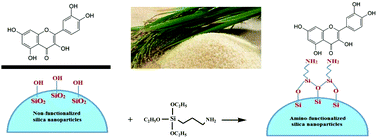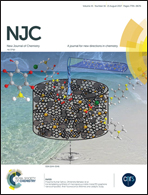Adsorption kinetics and isotherms of bioactive antioxidant quercetin onto amino-functionalized silica nanoparticles in aqueous ethanol solutions
Abstract
Nano-structural particles of silica were synthesized from low-cost rice husk by acid leaching and further annealing at different temperatures. The surface of the nanoparticles was then functionalized using amino-silane to improve their adsorption properties. The structure of the nano-absorbent was characterized by X-ray diffraction (XRD), transmission electron microscopy (TEM), Fourier transform infrared spectroscopy (FT-IR), and thermal gravimetric analysis (TGA). The efficiency of the formed absorbent for the adsorption of quercetin, a plant flavonoid with potent antioxidant activity, was examined in different compositions of water–ethanol mixture (0–100% by v/v). In the batch experiments, the effect of variation of initial concentration of quercetin, pH of solution, and solvent composition was explored on the adsorption behavior. The equilibrium adsorption data were better represented by the Freundlich isotherm model rather than the Langmuir model. In addition, the optimum conditions for quercetin adsorption were achieved at alkaline pH ranges. Furthermore, a significant relationship was found between the adsorption capacity and the extent of preferential solvation of quercetin by ethanol in the binary mixture. Modeling the rate of adsorption was done through different kinetic equations. The results indicated that the adsorption kinetics was well described by the pseudo-second-order model.



 Please wait while we load your content...
Please wait while we load your content...